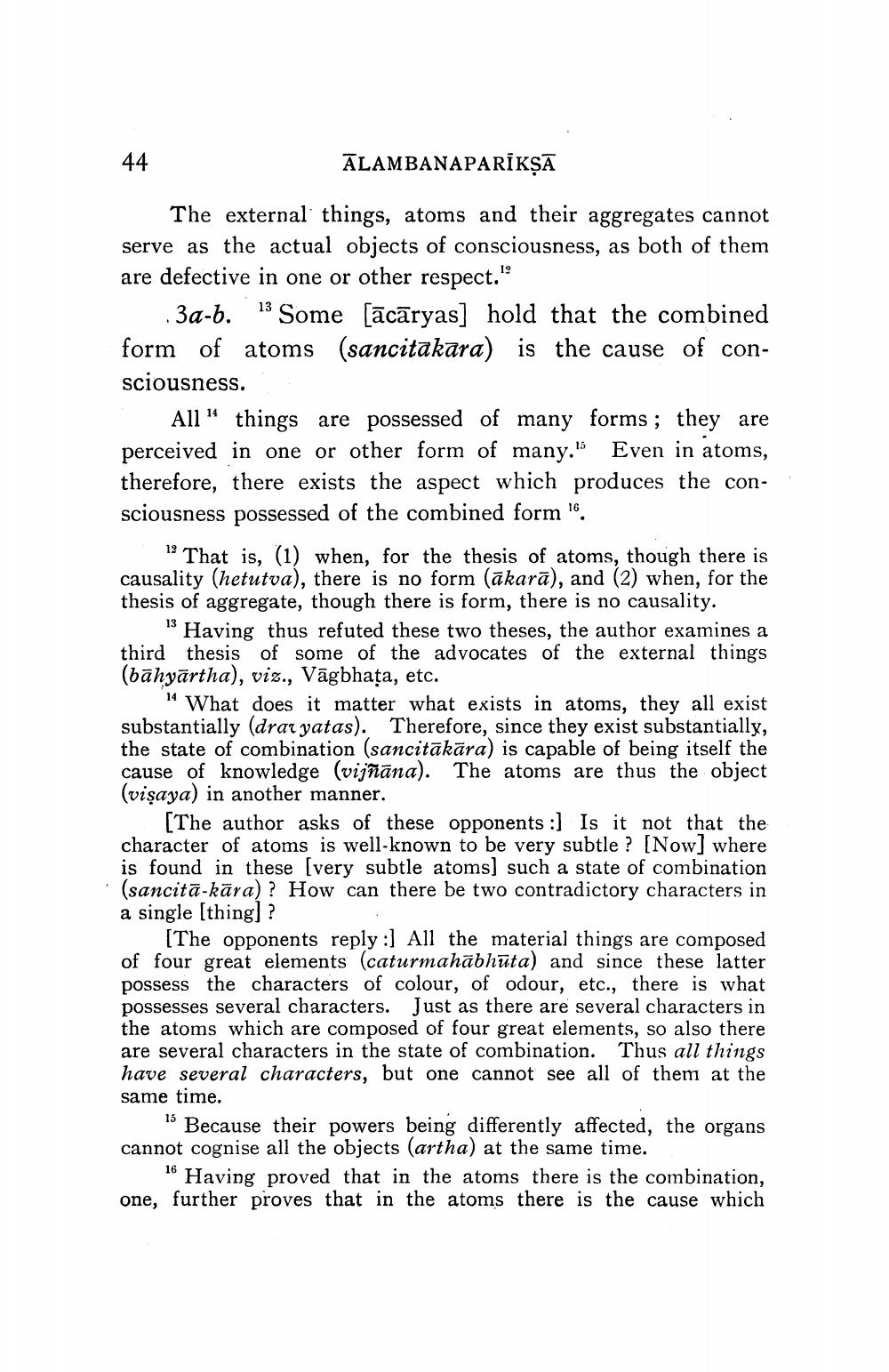________________
44
ĀLAMBANAPARĪKȘĀ
The external things, atoms and their aggregates cannot serve as the actual objects of consciousness, as both of them are defective in one or other respect."
.3a-b. 13 Some [ācāryas] hold that the combined form of atoms (sancitakara) is the cause of consciousness.
All" things are possessed of many forms; they are perceived in one or other form of many. Even in atoms, therefore, there exists the aspect which produces the consciousness possessed of the combined form 16.
? That is, (1) when, for the thesis of atoms, though there is causality (hetutva), there is no form (akarā), and (2) when, for the thesis of aggregate, though there is form, there is no causality.
Having thus refuted these two theses, the author examines a third thesis of some of the advocates of the external things (bāhyārtha), viz., Vāgbhața, etc.
14 What does it matter what exists in atoms, they all exist substantially (drar yatas). Therefore, since they exist substantially, the state of combination (sancitākāra) is capable of being itself the cause of knowledge (vijñāna). The atoms are thus the object (vişaya) in another manner.
[The author asks of these opponents :) Is it not that the character of atoms is well-known to be very subtle ? [Now] where is found in these [very subtle atoms) such a state of combination (sancitā kāra)? How can there be two contradictory characters in a single (thing] ?
(The opponents reply :) All the material things are composed of four great elements (caturmahābhūta) and since these latter possess the characters of colour, of odour, etc., there is what possesses several characters. Just as there are several characters in the atoms which are composed of four great elements, so also there are several characters in the state of combination. Thus all things have several characters, but one cannot see all of them at the same time.
Because their powers being differently affected, the organs cannot cognise all the objects (artha) at the same time.
10 Having proved that in the atoms there is the combination, one, further proves that in the atoms there is the cause which




